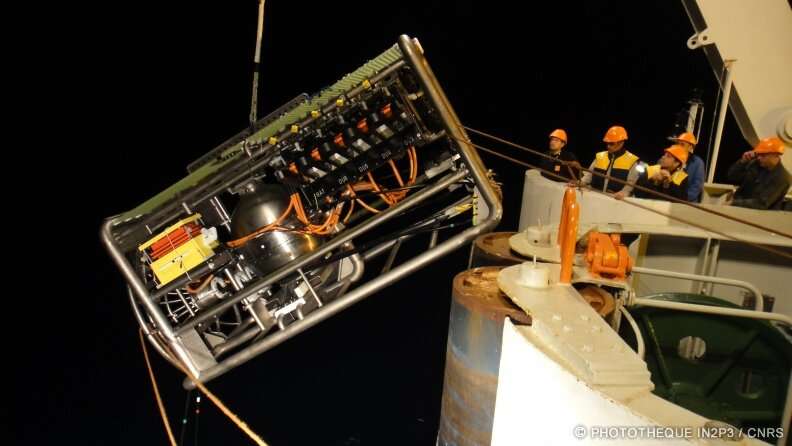This article has been reviewed according to Science X's editorial process and policies. Editors have highlighted the following attributes while ensuring the content's credibility:
fact-checked
trusted source
proofread
A new neutrino laboratory at the bottom of the Mediterranean for probing sea and sky

The Laboratoire Sous-marin Provence Méditerranée (LSPM) lies 40 km off the coast of Toulon, at a depth of 2,450 m, inaccessible even to sunlight. Through this national research platform run by the CNRS in collaboration with Aix-Marseille University (AMU) and IFREMER, scientists will investigate undersea unknowns while scanning the skies for neutrinos. These elementary particles of extraterrestrial origin know few obstacles and can even traverse our planet without bumping into a single atom.
The main instrument at the LSPM is KM3NeT, a giant neutrino detector developed by a team of 250 researchers from 17 countries. In the pitch-black abyss, KM3NeT will study the trails of bluish light that neutrinos leave in the water. Capable of detecting dozens of these particles a day, it will help elucidate their quantum properties, which still defy our understanding.
The other LSPM instruments will permit the scientific community to study the life and chemistry of these depths. They will offer researchers insights into ocean acidification, deep-sea deoxygenation, marine radioactivity, and seismicity, and allow them to track cetacean populations as well as observe bioluminescent animals. This oceanographic instrumentation is integrated into the subsea observatory network of the EMSO European research infrastructure.
LSPM is structured around a series of titanium junction boxes and intelligent systems able to power multiple scientific instruments and retrieve their data in real time, through a 42-km-long electro-optical cable. The base currently has three junction boxes, but the future addition of a second cable could bring the number up to five.
Provided by CNRS




















